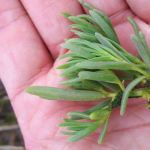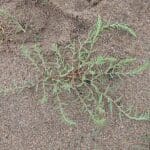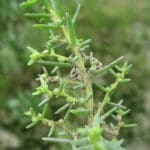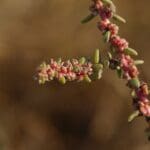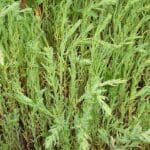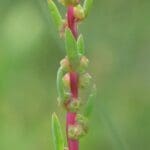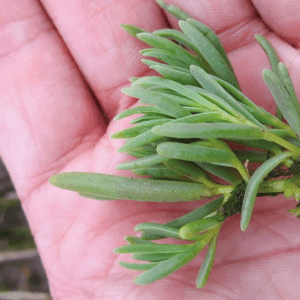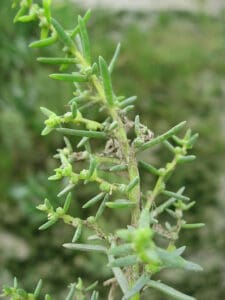Sea Spray / Spring / Summer / Edible
Common Names
Seepweed, Seaspray, Sea Blite, Sea Rosemary (we’re trying to rename it Sea Samphire as its uses are so similar to that of Marsh Samphire)
Botanical Name
Suaeda Maritima
Scientific Classification
Kingdom – Plantae
Order –Asparagales
Family – Amaranthaceae
Physical Characteristics for Sea Spray
Suaeda maritima is an annual growing to 0.3 m (1ft) by 0.3m (1ft) in upright bunches, leaves and stems a cool shade of glaucous green.
Leaves
The leaves are 0.5-4 cm long and 1–3 mm broad, shaped like succulent fleshy needles, connected directly to the stem. They superficially looking a bit like the garden Rosemary that gives it its other common name (Sea Rosemary), although the two plants are not closely related. The whole plant is glaucous, meaning it has a cloudy bluish-grey shimmer to it like the skin of a grape.
Flowers
The flowers are tiny and green, nestling where the leaves meet the stem. The buds look a bit like tiny Brussels Sprouts, which then open into 5 sections revealing little cream anthers carrying the pollen.
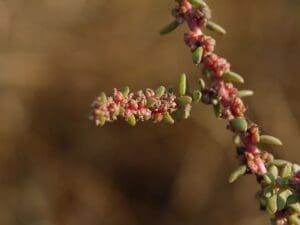
Stems
When young they start with one stem growing straight upwards, but as they mature more branching stems grow from the sides and base. the stems are usually the same shade of green as the leaves, or occasionally turn purplish-red towards autumn or in drought conditions
Habitat
It grows on salt marshes around the world, native to some places and naturalised in other. Usually found in the higher-up sections that aren’t flooded every tide, in full sun.
Known Hazards
Sea blite is a metallophyte, which means it can absorb and hold onto heavy metals from polluted ground. These concentrate more in the roots than the stems, but all the same, it would be unwise to pick it from places that are known to be heavily polluted. Though to be fair, you wouldn’t want to eat anything picked on the contaminated ground anyway!
Could be Confused with
Samphire or Glasswort. (Salicornia europaea) When young Sea Blite can look a bit like Marsh Samphire, and it grows in the same places. However, Blite grows much taller and has the needle-like leaves clearly separate from the stem
Edible Uses
Leaves – raw or lightly cooked. They can be added to salads or mixed with other leaves and cooked as a potherb. They contain a lot of salt from the environment, so can be used almost as seasoning sprinkled on a finished dish; the young shoots can be pickled.
Appears in spring, and is in flower from May to October.
Notes on Herbal uses
None known though some articles suggest an extract may have an antioxidant and hepatoprotective effect (protecting the liver from damage) in rodents
Extra notes from the Foragers
The ashes of the Sea Blite have been used to create a material used in making soap and glass.



